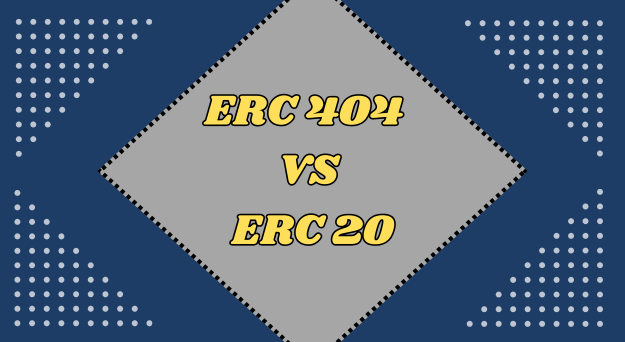As blockchain technology evolves, new Ethereum token standards continue to emerge to address the growing needs of DeFi, NFT integration, and Web3 technology. Two key standards making waves are ERC-20 and the experimental ERC-404.
While ERC-20 is the backbone of fungible tokens, ERC-404 introduces an innovative hybrid token model, combining NFT-like properties with tokenized liquidity. But how do they compare, and what does this mean for the future of Ethereum? Let’s dive into the key differences between ERC-404 vs ERC-20.
What is ERC-20?
ERC-20 is the most widely used Ethereum token standard, primarily designed for fungible tokens—assets where each unit is interchangeable with another of the same kind.
Key Features of ERC-20:
✅ Fungible – Every token holds the same value and properties.
✅ Divisible – Tokens can be broken down into smaller fractions.
✅ Liquid – Seamlessly traded across DEXs and CEXs.
✅ Smart Contract Compatible – Enables automated transactions and governance.
Examples of ERC-20 Tokens:
- USDT (Tether) – A stablecoin used for trading and payments.
- UNI (Uniswap) – A governance token for the Uniswap DEX.
- LINK (Chainlink) – Powers decentralized oracles for smart contracts.
Since its inception, ERC-20 has become the standard for DeFi, powering yield farming, lending platforms, and decentralized exchanges.
What is ERC-404?
ERC-404 is an experimental token standard that merges fungibility (ERC-20) with NFT-like uniqueness (ERC-721), creating a hybrid token model.
Key Features of ERC-404:
✅ Hybrid Fungibility – Tokens can function as both fungible assets and NFTs.
✅ Fractionalized NFTs – Enables NFT integration with token liquidity.
✅ Programmable Scarcity – Developers can create assets that blend collectibility with utility.
✅ DeFi & GameFi Use Cases – Unlocks new financial models and asset ownership structures.
Example of ERC-404 in Action:
The Pandora Project was one of the first to experiment with ERC-404, linking PANDORA tokens with NFT-based “Replicants”, making NFTs fractionally tradable on the open market.
This concept bridges DeFi and NFTs, allowing unique assets to be tokenized, split, and traded with the same ease as ERC-20 tokens.
ERC-404 vs ERC-20: Key Differences
| Feature | ERC-20 | ERC-404 |
|---|---|---|
| Fungibility | Fully fungible | Hybrid (Fungible + NFT-like) |
| NFT Support | None | Built-in NFT compatibility |
| Use Cases | Payments, DeFi, governance | Fractional ownership, GameFi, NFT marketplaces |
| Liquidity | High via DEXs | Emerging via hybrid DeFi/NFT markets |
| Standardization | Fully established & adopted | Experimental & evolving |
Why ERC-404 Matters
The ERC-404 token standard is redefining token innovation by combining liquidity with unique digital ownership. This hybrid model opens doors for:
- Fractionalized NFT trading – Enabling real-time liquidity for traditionally illiquid assets.
- Gaming & Metaverse economies – Where in-game assets can function both as collectibles and tradeable tokens.
- New DeFi integrations – Allowing staked NFT positions and yield-bearing hybrid tokens.
As Web3 technology continues to evolve, ERC-404 could become a game-changer for how we interact with on-chain assets.
Final Thoughts
While ERC-20 remains the gold standard for fungible tokens, ERC-404 is an emerging innovation that introduces NFT-like properties into DeFi.
Although it’s still experimental, ERC-404 represents the next step in Ethereum token standards, potentially reshaping DeFi, gaming, and NFT ownership.
At Top ERC 404, we’re committed to keeping you informed about token innovation, project updates, and the future of Ethereum’s hybrid assets.

Leave a Reply